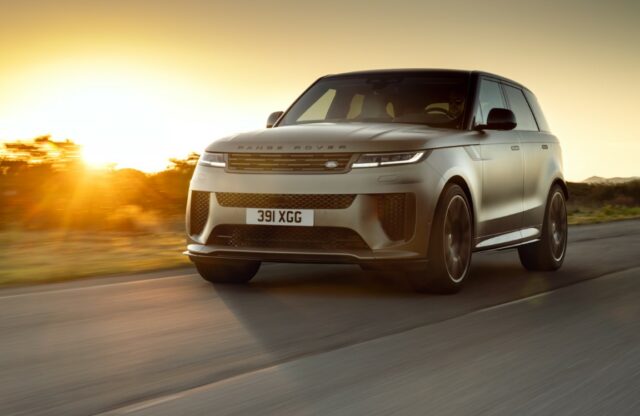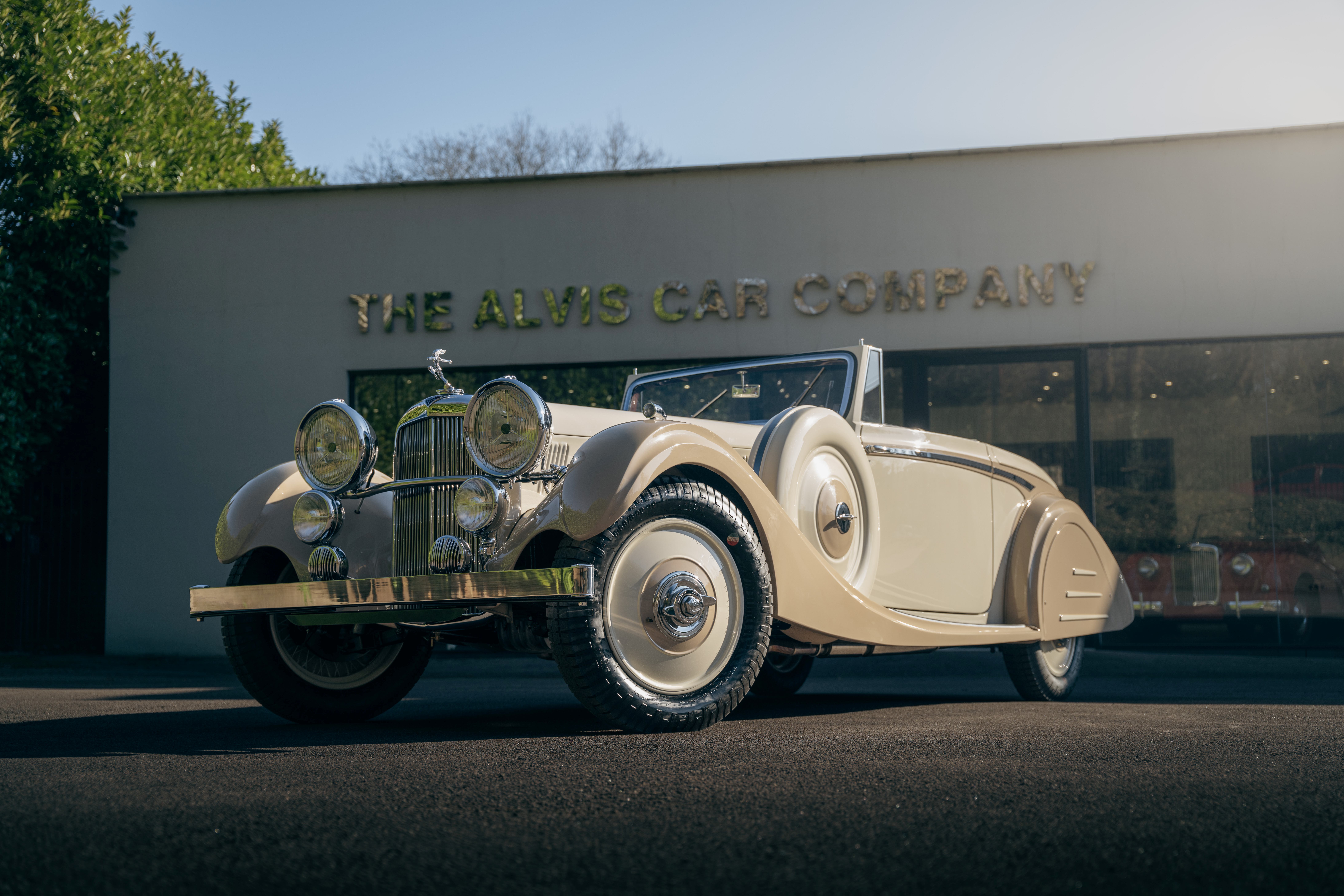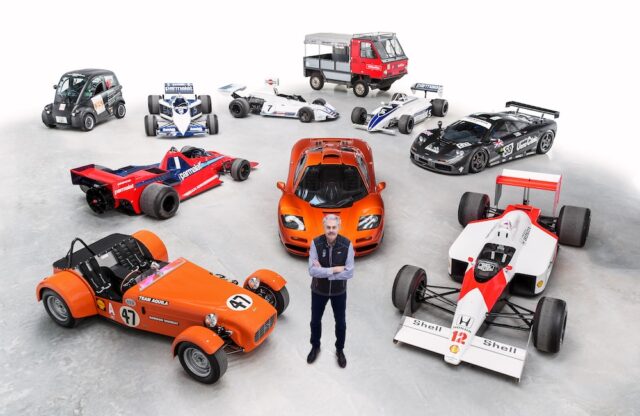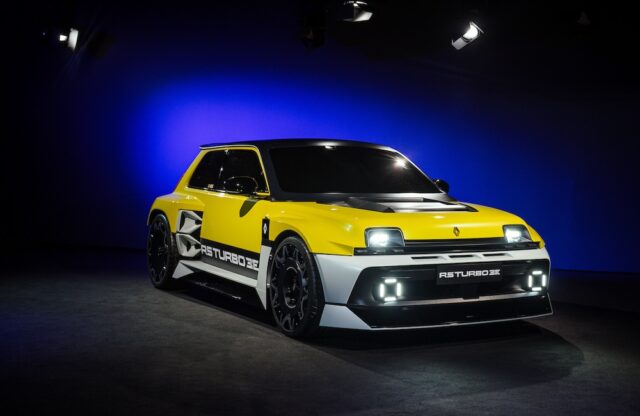WORDS: ELLIOTT HUGHES | PHOTOS: NICK DIMBLEBY
It wasn’t so long ago when the words ‘SUV’ and ‘high-performance’ were considered oxymorons. Put these together in 2024, and you get the automotive chimaera known as the super SUV. Part high-riding off-roader, part supercar, these vehicles are designed to be the Swiss Army knives of the motoring world.
The 2014 Range Rover Sport SVR was a very early example of such a car. Equipped with JLR’s thumping 5.0-litre supercharged V8, it could move at supercar speeds: 0-62mph in 3.8 seconds and 180mph flat-out – despite weighing the best part of 2500kg. Even more impressively, its performance didn’t come at the expense of the luxuriousness and off-road capability attributed to the badge emblazoned across its snout.
Ten years later, I’m heading to Portugal for the international media launch of the SVR’s successor: the Range Rover Sport SV. The itinerary is varied and demanding in equal measure. It kicks off with a 200km road route that begins with a slog down long expanses of motorway before meandering onto narrow ribbons of road draped over the undulating topography of the Portuguese countryside.
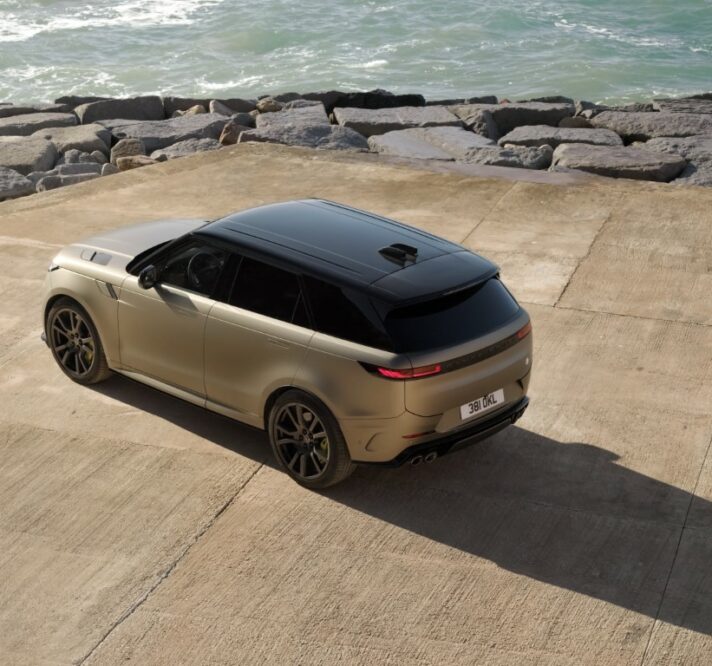
It feels every bit as fast as the 3.6-second 0-62mph figure suggests
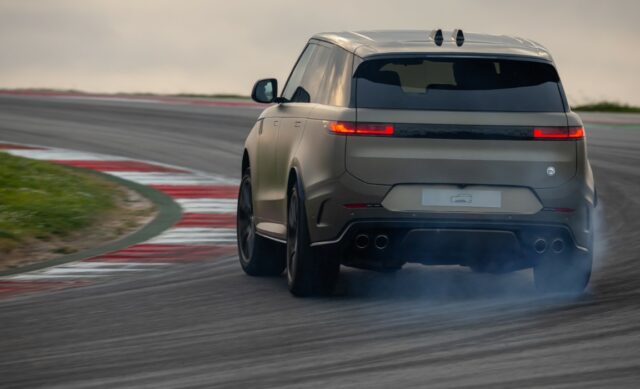

With that warm-up out of the way, the SV would have to prove its mettle on one of the world’s most demanding Grand Prix circuits: Portimão. Laps around this sinuous, high-speed rollercoaster of a track would be followed by a challenging off-road course, complete with wading sections, steep inclines and jagged banks to test torque, grip and axle articulation – a tall order.
Luckily for JLR’s Special Vehicle Operations division, the standard L461 Sport model provides excellent foundations from which to build. Its sleek, smooth bodywork boasts a slight increase in length compared with the Sport, and sits 6mm lower.
The most obvious changes can be seen up front, where you’ll find a redesigned grille, massive air intakes and a carbonfibre splitter. The lower sides of the car have also been slightly reprofiled, while a quartet of carbonfibre-finished exhaust tips protrude purposefully rearwards. It’s all far more subtle than the SVR’s controversial styling, that’s for sure.
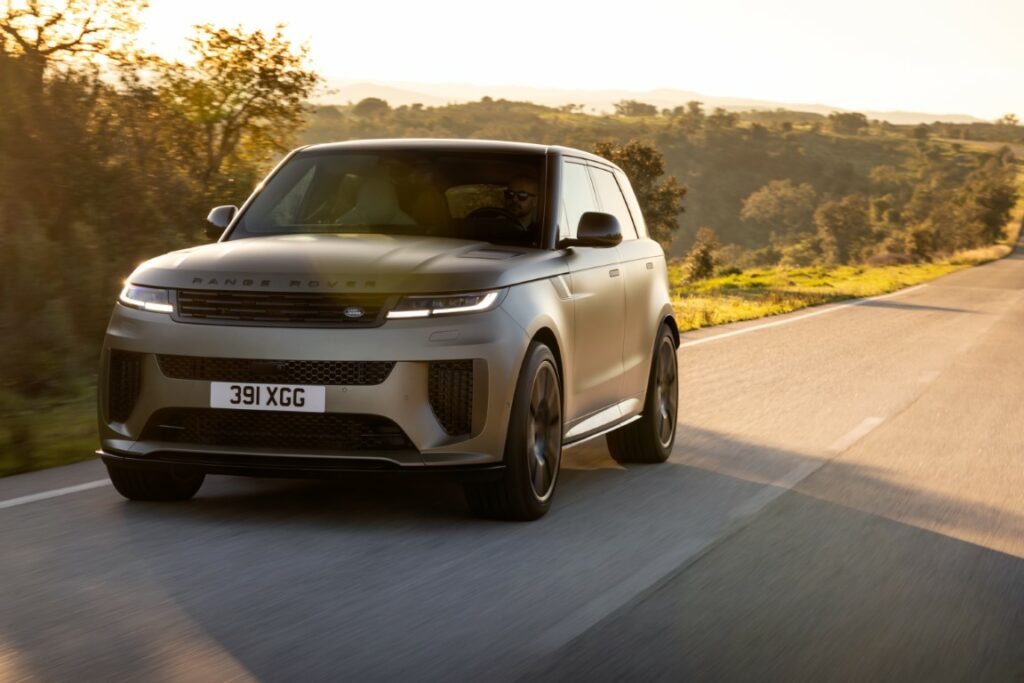
Speaking of controversy, my Edition One test car also happens to be fitted with the SV’s most divisive optional extras: 23-inch carbonfibre wheels and bespoke Brembo Octyma carbon-ceramic brakes. Together, they shave off 74kg of unsprung mass, but is the trade-off in practicality worth it in a 2.5-tonne Rangie? I’m not so sure. The invitation-only Edition One models also get three distinct colour options – Carbon Bronze Matte, Obsidian Black Gloss and Flux Silver Gloss – as well as special badging.
Happily, Range Rover has resisted the urge to reinvent the wheel as far as the interior is concerned. A blend of grippy and breathable Ultrafabrics upholstery, carbonfibre and high-gloss surfaces, everything you touch is beautifully finished and feels in line with this Edition One model’s £171,460 list price. It’s all very modern and minimalist, without feeling austere. Just 675 Edition Ones will be built before a mechanically identical mass-produced version takes over, and all are sold out.
In Comfort Mode, the SV is one of the finest long-distance motorway cruisers I’ve ever had the pleasure of driving. Remarkably quiet, comfortable and refined, it voraciously consumes the miles with minimal fuss. The driving position and front seats are excellent – you sit low enough to feel connected to the car, without sacrificing the commanding view ahead that Range Rover customers have come to expect.
Dubbed Body and Soul, the front seats, developed in collaboration with SubPac, are not only comfortable but also among the most technologically advanced ever fitted in a road car. The system allows those seated to ‘feel the sound’ via transducers that pulse and vibrate in sync with the audio from the 29-speaker Meridian sound system. While they’re certainly an innovative idea, I personally find them more gimmicky than groundbreaking.
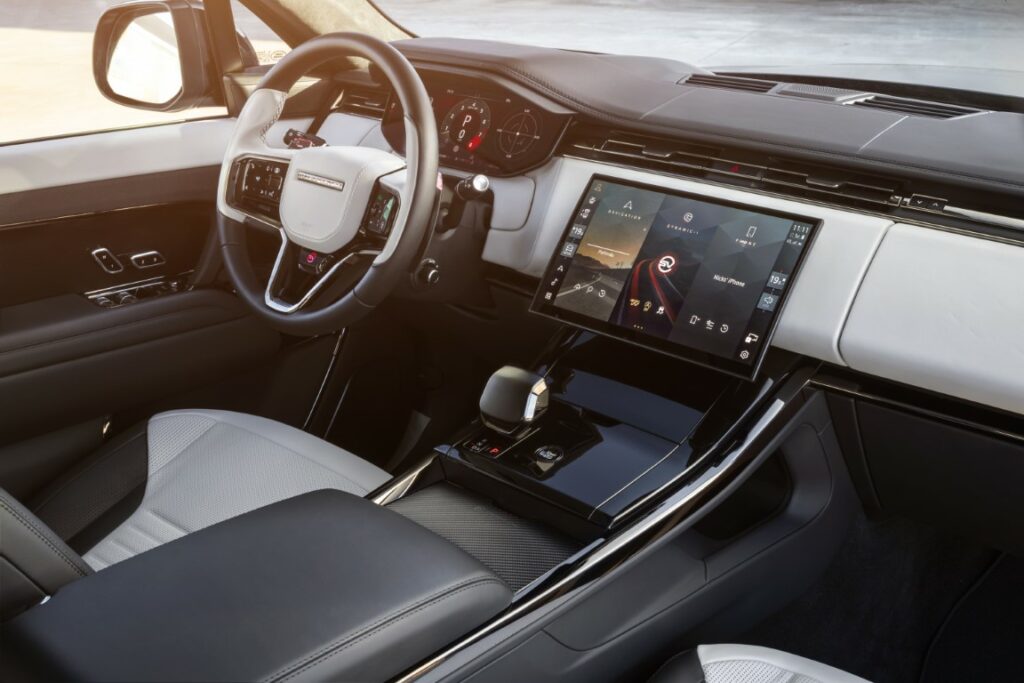
My only real criticism of the interior is the removal of physical dials for the Climate Control and driving modes. Instead, these are controlled via the 13.1-inch Pivi Pro infotainment system, which, thankfully, is snappy, bright and responsive. Even so, gazing down and flicking through menus to operate basic functions is both annoying and distracting, but will become easier once you’re more familiar with it. Another, more minor gripe is the piano black trim’s unique ability to attract scratches and fingerprints.
Such nit-picking is quickly forgotten once the Rangie peels off the motorway and onto the twisty countryside B-roads. Switching from Comfort to Dynamic Mode immediately transforms the car’s character. The steering tightens, the ZF eight-speed transmission shifts with more urgency, and the throttle response sharpens. Most impressive of all is the response from the SV’s air suspension.
Whether you’re braking, accelerating or cornering, the body control feels almost miraculous, remaining nearly totally flat while still supple enough to shrug off any bumps or crests. The secret behind this witchcraft is what Range Rover calls 6D Dynamics suspension. The system forgoes traditional anti-roll bars in favour of interlinked hydraulic dampers that are managed by two ECUs.
In layman’s terms, the hydraulically linked dampers can each actively adjust their rates of compression and rebound. This works by hydraulic fluid transferring from one side of the vehicle to the other to counteract body roll, while a central Load Distribution Unit manages the fluid pressure on both axles to reduce pitch. It’s an extremely clever system, and when combined with rear-wheel steering, torque vectoring and active rear differential, it allows the SV to handle in a manner a car of its weight and size has no business to.
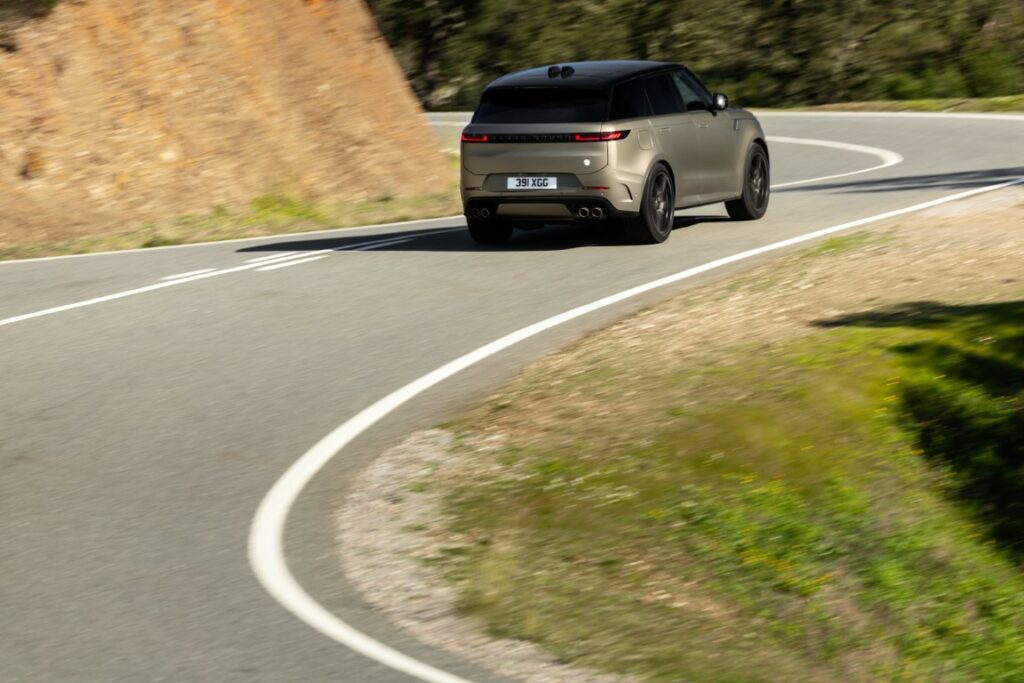
These systems prove invaluable during my three laps of Portimão. After a slow familiarisation lap, it is obvious what a challenging circuit this is. With SV Mode enabled, the interior and instrument panel are bathed in an angry red hue. Squeeze the throttle out of the final corner, and the hybridised 4.4-litre twin-turbo V8 unleashes 626bhp and 553lb ft.
The SV thunders to 160mph along the pit straight before reaching the first braking zone. Hit the brakes and ease on a quarter of steering lock as you bleed off the pedal, aiming a touch to the left of the sausage kerb. The lack of body roll remains incredibly impressive, as is the sheer stopping power of the eight-piston carbon-ceramic brakes.

After dealing with the opening complex of corners, you’re hard on the power, heading for another downhill braking zone at turn five. It feels every bit as fast as the 3.6-second 0-62mph figure suggests.
By lap three I’ve forgotten I’m in a 2560kg luxury SUV, and I brake too late into the first corner, running wide over the outside curb. Instead of risking disaster through being overly enthusiastic, I decide it’s better to dial things back and make it back to the pitlane in one piece. The fact that the SV encourages you to push that hard on a Grand Prix circuit is a testament to SVO’s engineers.
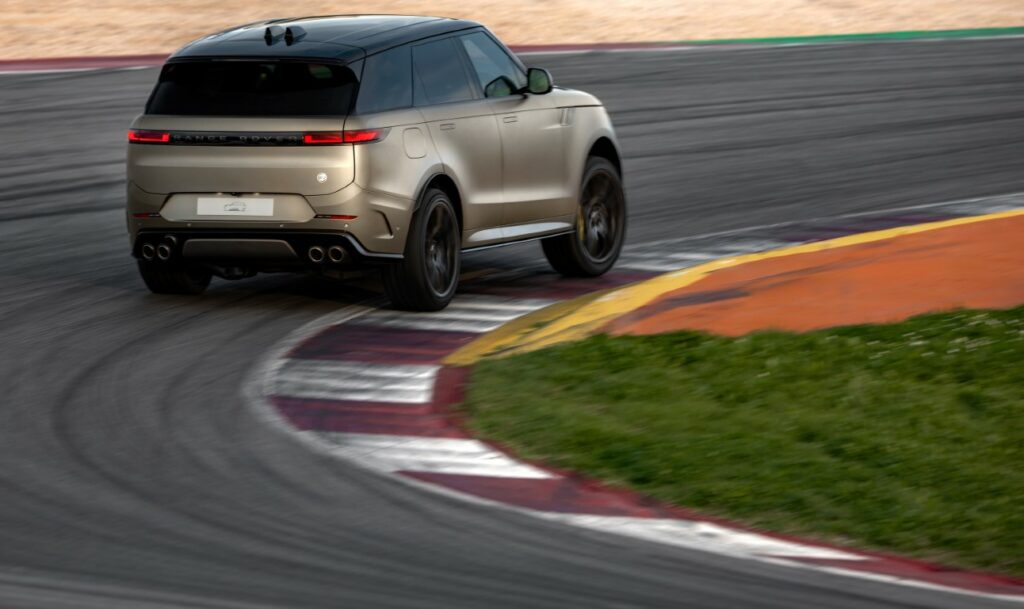
With my heart rate barely back to normal, it’s time to see what the SV can do away from the Tarmac. Unsurprisingly, it feels bizarre to drive the same model of car off-road after pushing it around a race track at high speed. However, there is a caveat: the SVs used on track were all wearing Michelin Pilot Sport 5 tyres and fitted with carbonfibre wheels and ceramic brakes. The off-road demonstrators, however, are riding on all-season rubber and 23-inch forged alloys, along with steel brakes. Tellingly, they have also had their carbon front splitters removed.
The SV’s dynamism comes at the expense of a few advantages off-road. Unlike other Range Rovers, the SV does not have a low-range transmission, and the lowered ride height also increases your chances of scraping its belly on rocks and boulders if you’re driving across some seriously rough terrain.
In truth, the gauntlet of off-road obstacles I traverse turns out to be far more challenging than any SV owner would dare attempt. With the ride height raised, the car simply shrugs off the wading section, while the impressive torque delivery and all-wheel-drive system give the impression of being winched up the steepest incline.

The most challenging part is a jagged uphill section that demonstrates the SV’s impressive axle articulation as the car dangles its rear nearside wheel in mid-air. While not the most difficult course I’ve encountered, it is enough to demonstrate that the SV remains a very capable off-roader and is leagues ahead of its direct rivals.
After a truly action-packed day, it is time to re-engage Comfort Mode, cruise back to the hotel like a limousine driver, and reflect. From a cynical perspective, you could argue that this is a pointless, over-engineered machine whose ability as a sports car is compromised by its weight and ride height, while its ability as an off-roader has been stymied in the quest for Nordschleife lap times.
Objectively, though, the compromise is small, and the breadth of its abilities is simply extraordinary. To put it another way, I’m never going to take the watch on my wrist 200 metres below the ocean, but it’s nice to know that it can do it.
Find out more about the new Range Rover Sport SV here.
